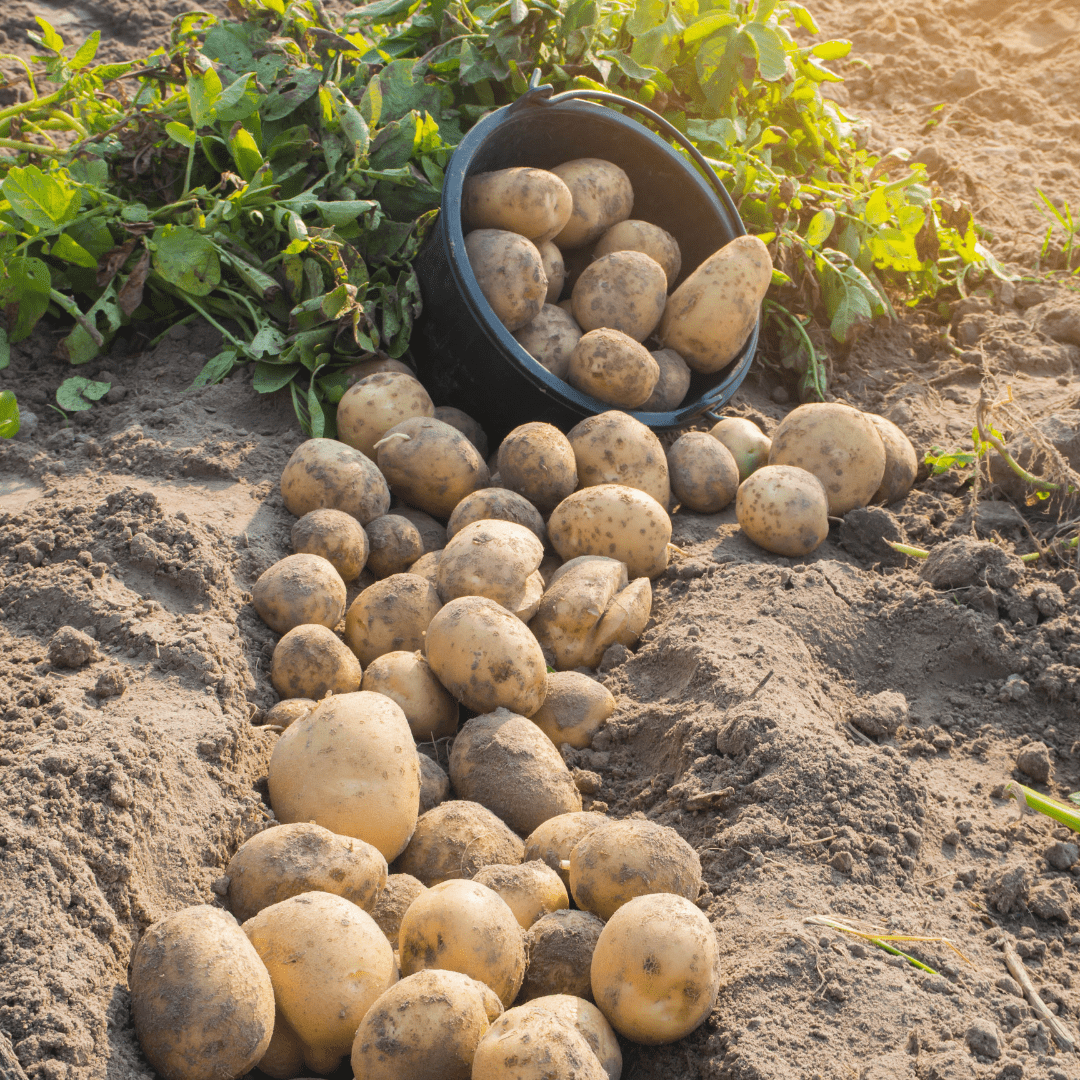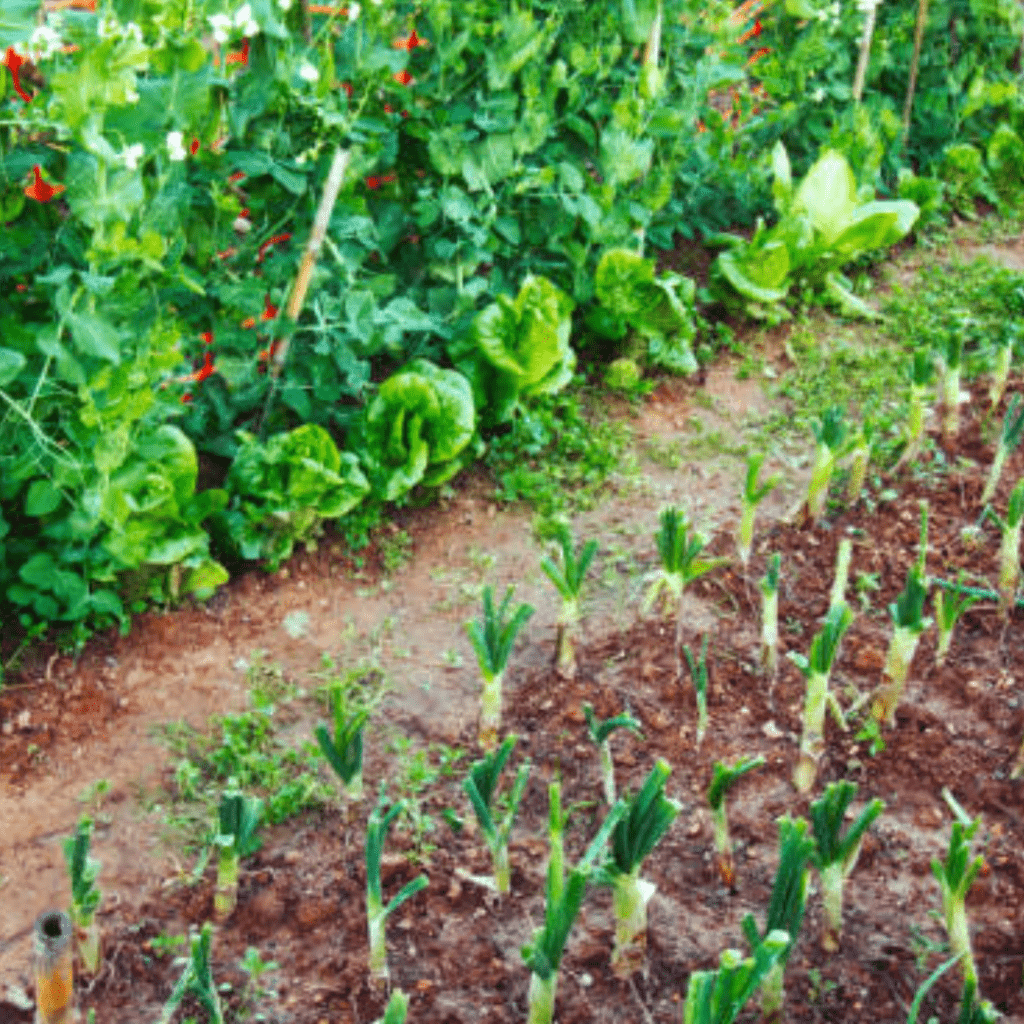Growing a potato patch is a vital step for anyone interested in self-sufficiency and survival preparedness. Potatoes are nutrient-dense, calorie-rich, and easy to store, making them an ideal food source during emergencies or extended off-grid living. By planting your own potato patch, you ensure a reliable, renewable supply of food that can sustain you and your family when other resources are limited. In addition to providing essential nutrition, potatoes are versatile in meals and resilient in a variety of growing conditions, making them a cornerstone of any survival garden strategy.
Growing homegrown potatoes in your backyard provides your family with a delicious, healthy, and versatile vegetable. You can turn a potato into so many recipes that these vegetables should be a staple in your yard and pantry. Growing a potato patch in just ten square feet can provide eighty to one hundred pounds of potatoes!
Potatoes can be grown year-round, stored long-term in their complete form, provide endless seed potatoes, are versatile in dishes, and are delicious.
Let’s learn more about why growing a potato patch is important for survival.
This is a pinnable post. Tap or hover over any image in this post to pin to your Pinterest Boards.
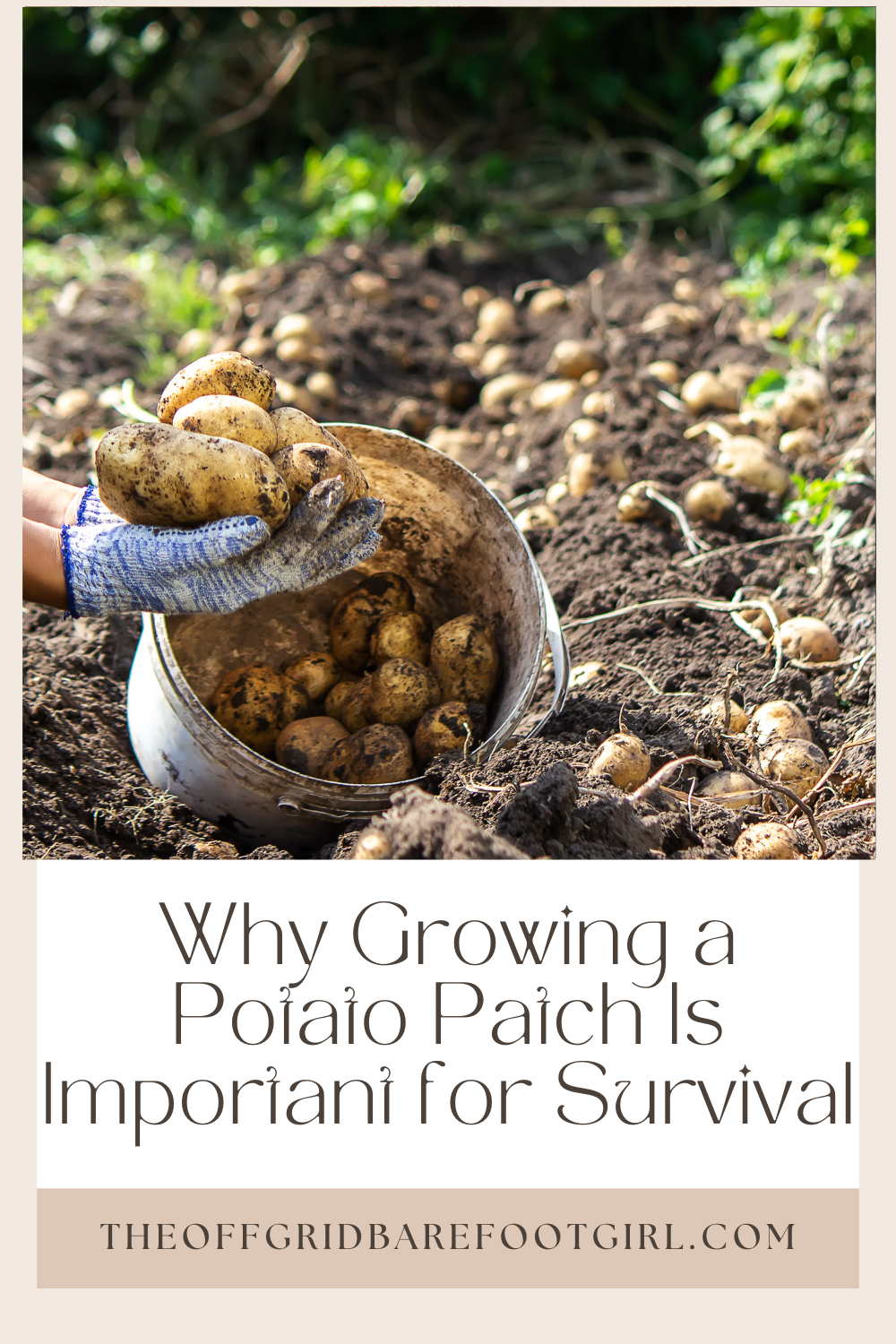
Why Growing a Potato Patch is Important for Survival
Potatoes are the best food source to keep on hand for a survival situation. This starchy food provides more amino acids, minerals, and vitamins than any other grain or starch. Potatoes can grow in any type of soil or no soil at all! They can be covered in straw, hay, or leaves and still grow a ton of potatoes.
Leave them alone long enough, and they will provide you with sprouts for seed potatoes that you can plant for another round of this wonderful crop.
Here is a quick list of things you can do with potatoes:
- Mashed potatoes.
- French fries.
- Potato wedges.
- Curly fries.
- Baked potatoes.
- Potato dumplings.
- Potato casserole.
- Potato salad.
- Potato soup.
4 DIY Garden Soil Tests to Perform
Potatoes will grow in any type of soil; however, if you want to perform easy DIY garden soil tests to learn more about the soil you are working with, you can visit my post 4 Easy DIY Garden Soil Tests to Do Now, to learn more.
How to Grow a Potato Patch
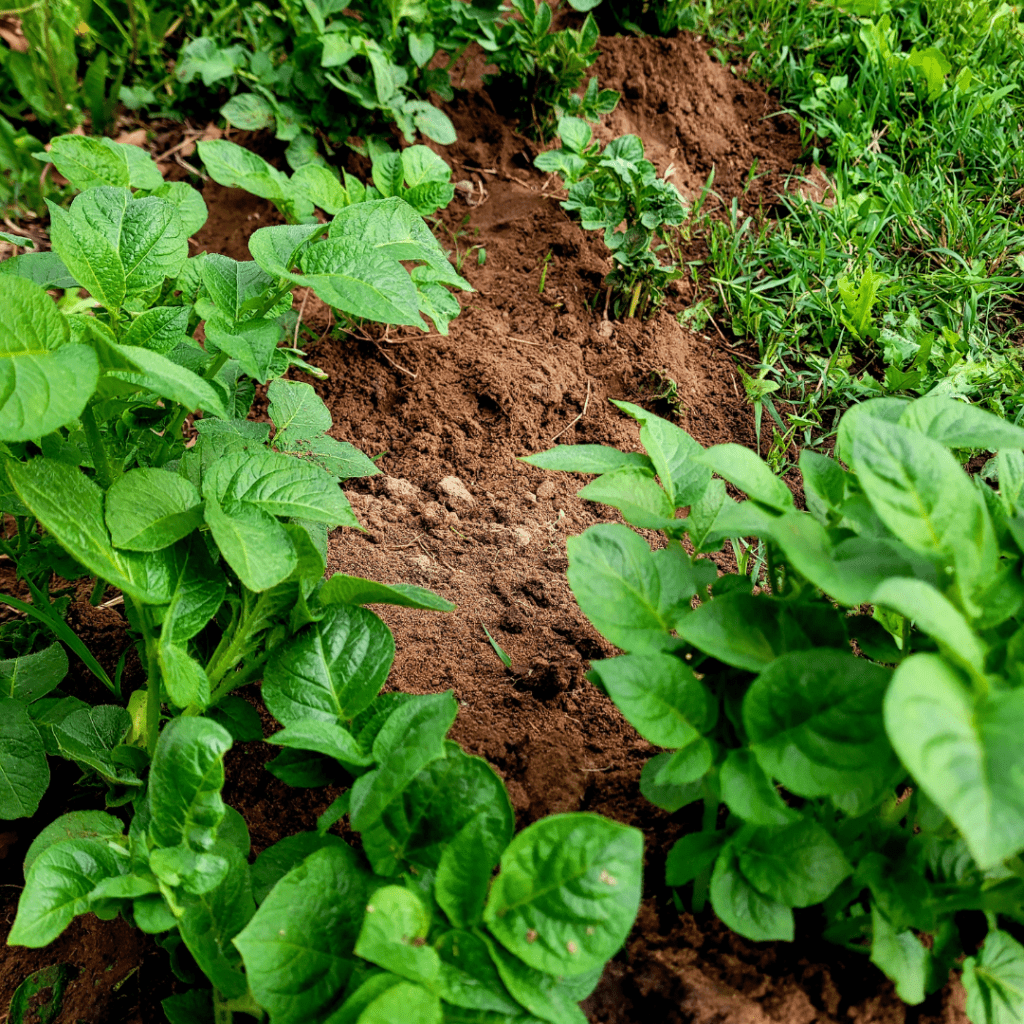
Growing a potato patch is so easy, and you are rewarded with an abundant potato harvest. Potatoes can be grown using different types of growing methods. Feel free to experiment with which growing method works best for you. Try starting one round of potatoes with one method, and the next time you grow them again, try a different method.
I grew potatoes successfully using the methods I discuss below. My favorite potato-growing method is burying them in a thick layer of leaves and straw mixed together. This is so convenient for me in the fall when the leaves are ready to be raked up. I recruit my super raking team (my kids) and we rake the leaves right into the potato patch. The leaves will be there, ready to cover the potatoes on potato planting day (whenever I get around to it).
- You can grow potatoes in containers and grow bags, and they will do fantastic.
- Grow potatoes in the ground via the hilling method by adding more soil to cover the plants just barely enough for the leaves to remain in the sun.
- Allow potatoes to grow in a pile of straw, hay, or leaves (my favorite method to grow my potatoes).
Grow Potatoes Anywhere with Potato Grow Bags!!
Psst! You do not need a yard to grow potatoes! Grow them on your deck or balcony, or sidewalk with grow bags. You can still grow a ton of potatoes with grow bags. Grab six grow bags and plant a different variety per bag for a wonderful potato harvest!
Best Potato Varieties to Grow
When selecting the potatoes you want to grow, it is best to think about what you reach for in the produce section at the grocery store. Which types of potatoes do you regularly purchase and use? Start there and grow those types of potatoes in your potato patch.
When looking at the different types of seed potatoes in the seed catalogs, it is tempting to grow those fun purple and colorful potatoes. While they are fun to grow and showcase, they are not practical. I tried serving purple mashed potatoes to my kids once, and they never touched them! It just is NOT appetizing when placed on the dinner plate!
This is the reason you need to remain practical when selecting your seed potatoes and only grow what you know you and your family will eat. Some may find that eating purple potatoes is fun; however, how often have you served your family purple potatoes? It will not be worth the effort to purchase, grow, harvest, and preserve potato varieties that your family will not eat.
I hope this list below will help you determine which varieties of potatoes to grow.
Selecting the Best Varieties for Growing a Potato Patch
Yukon Gold: Yukon potatoes are the ultimate potato for mashing, roasting, boiling, frying, and sauteing. The texture holds well and has a natural buttery taste, and is perfect and delicious.
Russets: Russet potatoes are great for baking, mashing, roasting, and making French fries. I grow russets specifically for French fries!
Red potatoes: Red potatoes hold their shape well and are great for grilling, kabobs, scalloping, frying, and steaming. Red potatoes are great for potato salads and soups. These do not do well as mashed potatoes, as they will become gluey when worked and mashed too much.
Sweet potatoes: Sweet potatoes are great for mashing, baking, boiling, roasting, and frying. They make wonderful sweet dishes and are great for adding to bread recipes. Sweet potatoes are great because they can be used for both sweet and savory dishes!
Butterballs: Butterball potatoes make the creamiest mashed potatoes!
Harvesting Your Potato Patch
Harvest your potato patch when the potato plants die back. Once you see the potato plants dying off, you need to refrain from watering them to prevent them from rotting and allow them to finish growing into strong potatoes.
Pull up the potato plants, remove the soil, leaves, or straw, and dig around for the buried treasure of potatoes. Get your kids involved in this part, it’s fun!
Once all of the potatoes are harvested, spread them out on cardboard under the porch or in the garage on the floor to air dry and cure in a single layer for two weeks. This is an important step before piling them in a potato bin for storage. Curing the potatoes helps them to completely dry off and harden their skins. DO NOT wash the dirt off of any of them!
Best Ways to Store Potatoes
Once your potato harvest has been properly cured, it’s important to store them in the right conditions to maximize their shelf life and maintain their quality. A potato bin or a large, breathable container works best, allowing air to circulate around the tubers while keeping them protected. Choose a cool, dry, and dark location — temperatures around 40–50°F are ideal. Darkness helps prevent greening and the production of solanine, which can make potatoes bitter and potentially unsafe to eat. Many gardeners find that a basement or root cellar is the perfect spot, as it naturally maintains these conditions. Make sure to check your potatoes periodically, removing any that show signs of sprouting or rot, so the rest stay fresh for months. Proper storage ensures you’ll have a reliable food source from your potato patch throughout the winter and beyond.
Conclusion
Incorporating a potato patch into your garden isn’t just about growing food — it’s about building resilience and self-reliance. With minimal space and effort, you can harvest a nutrient-rich, versatile crop that will sustain you and your family through emergencies or simply help you live more off-grid. Whether you’re a seasoned gardener or just starting out, planting potatoes is a practical, rewarding step toward a more prepared and self-sufficient lifestyle. By taking the time to grow your own food, you’re not only investing in survival but also in the satisfaction of enjoying the fruits (or in this case, tubers) of your labor.
Resources: Here are some helpful resources for further information.
- Growing Potatoes Organically – By A Way to Garden
- Your Quick & Easy Guide to Growing Potatoes in Raised Beds – By Gardenary
- A Beginner Grows Some Spuds – By Fifth Season Gardenig
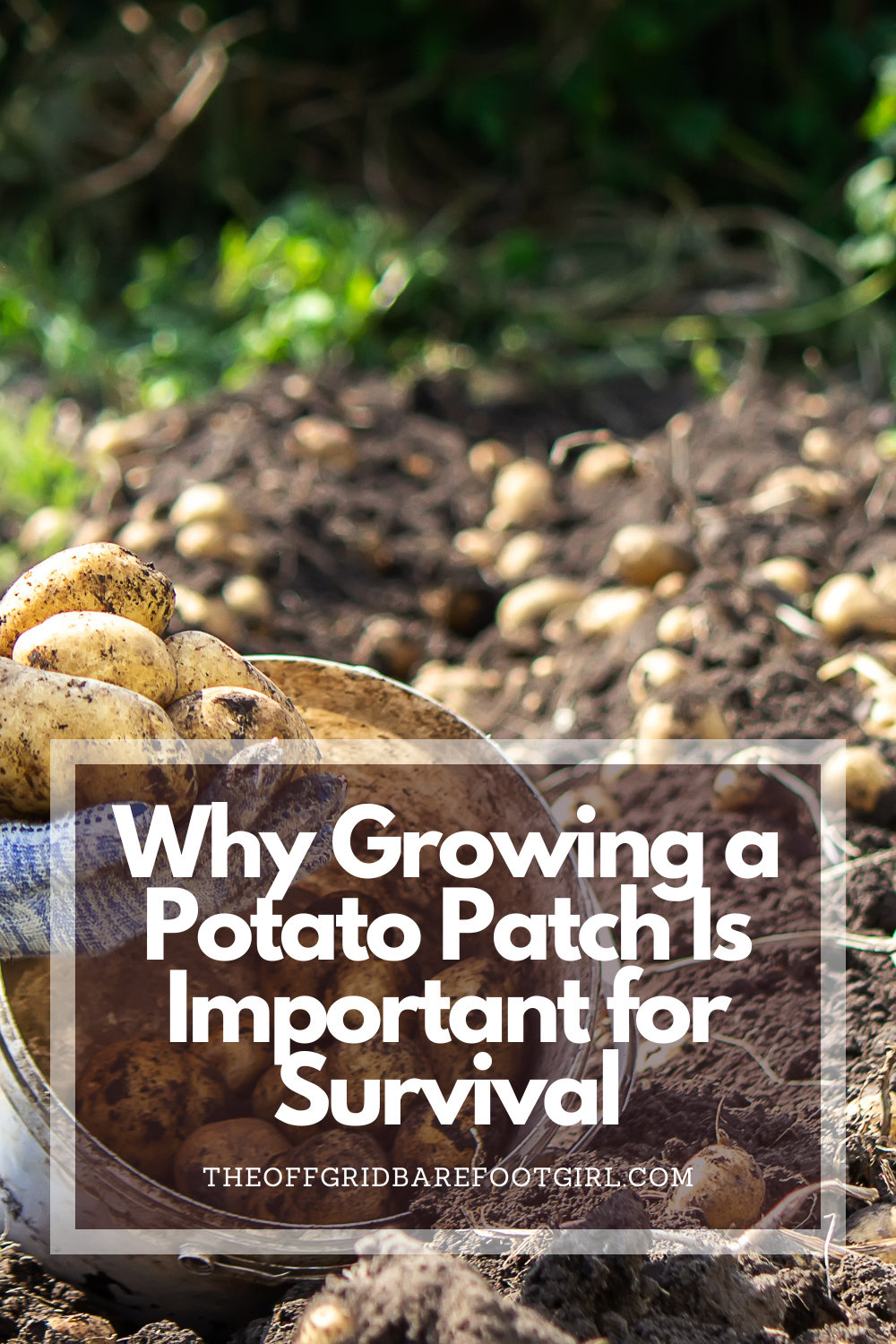
Frequently Asked Questions
1. How long does it take for potatoes to be ready to harvest?
Most potato varieties are ready to harvest in 70–120 days, depending on the type and growing conditions.
2. Can I grow potatoes in small spaces or containers?
Yes! Potatoes grow well in large containers, grow bags, or even barrels, making them ideal for small gardens.
3. How should I prepare the soil for planting potatoes?
Choose loose, well-drained soil, and mix in compost or aged manure to provide nutrients and encourage healthy tuber growth.
4. What’s the best way to prevent potatoes from spoiling after harvest?
Cure the potatoes for 1–2 weeks, then store them in a cool, dry, dark place like a basement or root cellar, checking periodically for sprouting or rot.
Summary
I hope I have inspired you to plant your garden with these tips and products.
If you were encouraged by this post, I invite you to check out my FREE Printables Page for fun free printables, planners, and charts.
ENTER MY FREE Printables Page HERE
Here are some more of my gardening inspiration posts to check out!
How to Grow Your Own Food Without a Backyard!
My Best Spring Garden Posts in One Spot!
Spring Garden Soil Prep: How to Improve Your Soil
Seed Starting Mix 101: Everything You Need to Know!
How to Plan a 200 Sq. Ft. Vegetable Garden Layout
How I Easily Start My Seeds Without Expensive Grow Lights!
How to Create a Smart Garden: Tech Meets Nature!
The Best Cheap Raised Vegetable Garden Beds
How to Grow Artichokes: Plant Once and Harvest for 5 Years!
The Best 8 Fast-Growing Vegetables In Just 45 Days!
From Snow to Sow: Plan Your Spring Garden Now!
11 Fun Ways to Brighten Your Spring Garden with Personality
Top 10 Spring Garden Crops to Harvest in 30 Days and Eat Now!
The Best Survival Crops for Caloric Survival
My Victory Garden: What I Learned from 5+ Years
Why Every Family Should Have a Victory Garden in Their Backyard Now!
The Best Perennials for a Long-Term Survival Garden
The Best Essential Oils for Plants That Repel Garden Bugs
More Gardening Projects!
How to Grow Green Garden Peas: Perfect Plump Peas!
Hugelkultur: Does This Epic Pioneering Method Actually Work?
9 Ways to Celebrate Earthing Day in Your Garden!
Gardening Indoors: Secrets of Growing Your Food Inside!
How to DIY a Milk Jug Drip Irrigation System!
Why Cedar Mulch Is The Perfect Natural Weed Barrier
Gardening Projects
Onions: How to Grow Onions for Storage
Peas: How to Grow Garden Peas for a Bumper Crop
Carrots: How to Grow Carrots for a Bountiful Harvest
Prep Your Garden for Spring Planting with These Expert Tips!
How to Grow a Prepper Garden to Survive and Thrive
The Best Garden Tools You Need for a Productive Season
Fastest Growing Vegetables for Your Survival Garden
How to Grow Marigolds As Pest Control In Your Vegetable Garden
Must-Have Tools for a Successful Balcony Vegetable Garden
How to Effectively Combat Powdery Mildew in Your Garden
The Best Tips for Organic Gardening
How to Release Ladybugs In Your Garden for Organic Pest Control
The Best Garden Snail Control Strategies
The Best Spring Vegetables to Grow in Your Garden
Seed Starter Mix: How To Make Your Organic Seed Starter Mix At Home
How to Grow a Productive Canning Garden
How to Plant and Grow a Salsa Garden
Easiest Heirloom Vegetable Seeds to Grow Now
How to Use the Hand Twist Claw Tiller: Tackling Tough Soil
More Fun Gardening Posts to Check Out!
Planning Your Garden: How to Plan a Vegetable Garden: Expert Green Thumb Tips!
Winterizing the Garden: How to Winterize Your Vegetable Garden: Step-by-Step Checklist
Mulching the Garden: How to Make Leaf Litter Mulch
Grow a Pumpkin Patch: How to Grow a Pumpkin Patch in Your Backyard
How to Grow a Fall Garden: 9 Best Fall Crops
Clever Ways to Incorporate Indoor Composting into Your Home
How to Start Composting for the Garden: A Step-by-Step Guide
The Ultimate Guide to Composting in Your Suburban Backyard
Why I Built A Survival Garden in My Backyard
16 Best Medicinal Herbs to Grow in Your Garden Now
Blessings,
The Off Grid Barefoot Girl

